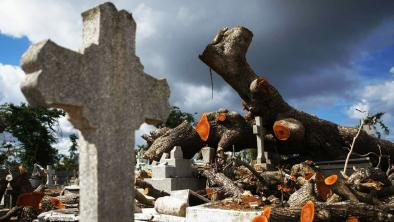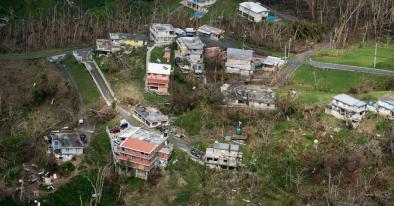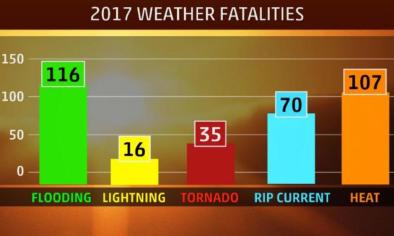Science Source
Extreme Rainfall Associated With Hurricane Maria Over Puerto Rico and Its Connections to Climate Variability and Change
- Analyzes the extreme rainfall produced by Hurricane Maria using 35 historical weather stations with daily precipitation data from 1956–2016
- Uses a statistical analysis technique to determine how unusual Maria's rainfall was and if Maria's rainfall can be attributed to climate variability and/or climate change
- Finds that Hurricane Maria produced the single largest maximum rainfall event since 1956 and had the highest precipitation of 129 storms that have impacted the island since 1956
- Concludes that extreme precipitation, like that of Hurricane Maria, has become much more likely in recent years and long‐term trends in atmospheric and sea surface temperature are both linked to increased precipitation in Puerto Rico
- These results place Maria prominently in the context of extreme storms that have impacted Puerto Rico and indicate that such events are becoming increasingly likely
Related Content
Headline

Jun 1, 2018 | The Daily Beast
Harvard Study: Hurricane Maria Killed More People Than Katrina and 9/11 Combined
Headline

Jun 1, 2018 | New York Times
Puerto Rico’s Hurricane Maria Death Toll Could Exceed 4,000, New Study Estimates
Science Source
| Geophysical Research Letters
Increasing Magnitude of Hurricane Rapid Intensification in the Central and Eastern Tropical Atlantic
Karthik Balaguru, Gregory R. Foltz, L. Ruby Leung
Headline

May 3, 2018 | The Weather Channel
The Deadliest Types of Weather in 2017


